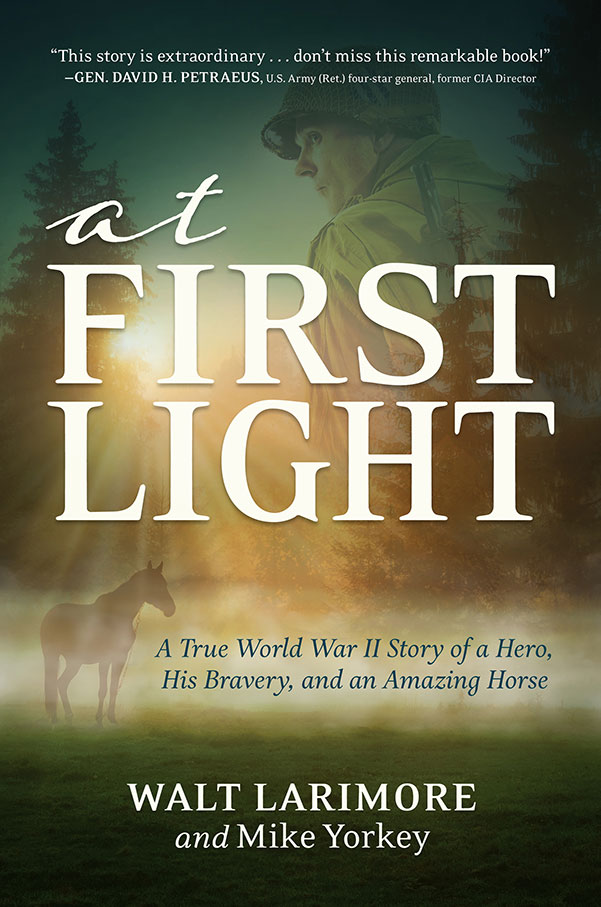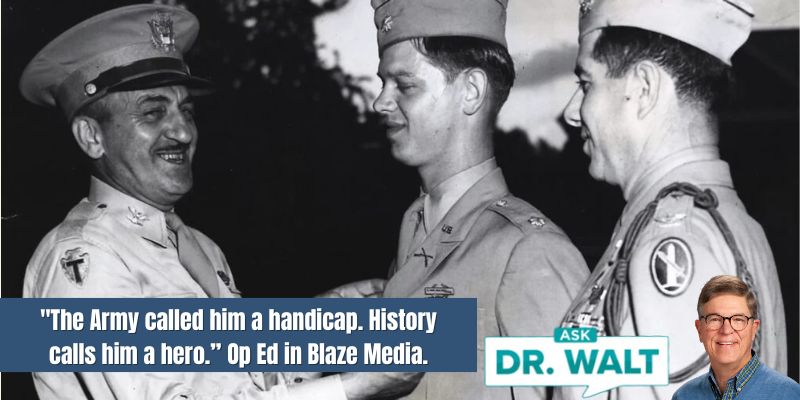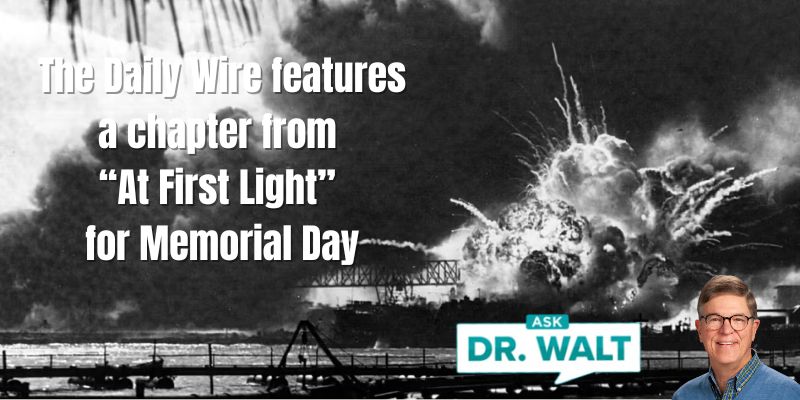
Day 7 — Our Scotland and Ireland Adventure
May 22, 2024
May 23, 1944 — The first day of the Anzio breakout saw the 3rd Division suffering nearly 1000 casualties – the heaviest on our side
May 23, 2024At daybreak on the morning of May 23, at 0538, the front remained quiet. The enemy, huddled in their dugouts, was no doubt catching up on their sleep after another vigilant night. Phil was wide awake, though, thinking about his parents and Marilyn—and contemplating how much his life revolved around first light, meaning the end of a difficult night’s work or, as it would be today, the beginning of another arduous battle.[1]

At 0545, more than a thousand guns, mortars, tanks, and tank destroyers began a deadly bombardment of the German lines and rear-area positions. Ten battalions of light, medium, and heavy artillery poured high explosives into enemy fortifications and gun positions while Phil and his men covered their ears. Adding to the cacophony were 500 large-bore howitzers[2] that sent high explosives into the air and shredded steel into the enemy’s territory for forty-five minutes.
Simultaneously, 300 .50-caliber machine guns and 400 mortars pumped out round after round into the German fortifications. Both the duration and intensity were far greater than anything Phil had ever experienced before. The barrage was so intense that he wondered how anything could be left of the German lines and their soldiers.
One of his soldiers grinned while listening to the thundering explosions and sarcastically said, “Hitler, count your children, you bastard!” The smoke, artillery, and gloomy weather assured that the Germans were both blind and hunkered down.
Then the weather suddenly changed in a way that was almost too good to be true. Clearing skies allowed Allied fighter bombers to pummel the Germans massed behind the Cisterna-Rome railroad that served as the enemy’s final line of defense, as well as an assembly area from which to launch attacks. With the Germans appropriately softened up, the artillery bombardment dropped off so that Sherman tanks could start advancing at 0630 hours along the white-taped tracks marked by Phil, his men, and other A&P platoons and mine squads.
When the attack order was finally transmitted to the front, Phil yelled to his platoon, “Come on, boys!” as he and thousands of other Dogfaces charged. Many had their webbed belts heavily hung with pear-sized grenades. Riflemen ran with bayonets fixed. Heavy weapon squads—machine guns and mortars—kept close on their heels. Directly overhead, the .50-caliber machine guns behind them lay down a thick cover of bullets that sounded like an endless high-pitched thud-thud-thud. Phil and his men sensed this was a day of destiny for the beachhead.
The main effort of the 3rd Division was made by the 30th Infantry on a 2,500-yard front, but the enemy recovered. Resolutely stiffened, buttressed by well-prepared, camouflaged anti-tank gun positions and extensive minefields, pillboxes, anti-personnel minefields, and barbed wire, the Germans were intent on carrying out Hitler’s command to repel any and all efforts of the Allies to affect a breakthrough. The enemy garrison held out stubbornly, but it could not prevent the 30th Infantry on the north and the 15th Infantry on the south from closing in.
The primary attack began with the 2nd and 3rd Battalions of the 30th abreast, under the continuing cover of smoke and tank and M-18 Hellcat[3] TD fire. Phil and his men, tasked with resupplying forward units with more ammunition, moved forward but came under withering artillery and mortar fire, causing them to join the fight.
One well-placed heavy-caliber mortar shell landed in the middle of the spearhead platoon, wounding or killing all but four of the men. The dead and wounded could not be immediately evacuated, meaning the entire battalion, including Phil and his men, was forced to file through and around the casualties littering a narrow ravine. Some of the men were screaming in agony, which twisted Phil’s guts.
He did not stop, nor did his men, because infantrymen were trained not to render first aid to the wounded while attacking since this would slow down the assault’s momentum. Phil was comforted that medics would quickly attend to the wounded, and the GR men would come behind to pick up the dead. But the carnage served to embolden Phil as well as the men of the 30th.
Then the German line—comprised of two German divisions or six regiments—stiffened. By 0800 hours, the Allies had hardly gained a quarter of a mile.
Phil’s radioman handed him the receiver. “You may want to listen to this, Lieutenant.”
Phil recognized the voice of General O’Daniel, the division commander. “It’s going too slow!” the general complained. “Throw everything you have at them!”
A staff officer responded that the two lead companies were pinned down. Phil smiled as O’Daniel shouted, “We have no such words in our vocabulary now!”
Phil and his platoon were attached to Company L, led by Captain Pridgen, with Ross Calvert by his side. While moving up a large gorge with more ammunition to deliver, they came to a sharp bend in the ravine where the enemy had installed a company strongpoint. Phil spotted machine gun nests dug into the shoulders of the ravine, outlying rifle pits, concertina and double-apron wire,[4] and similar positions stretching northwest across the road. He and his men immediately went to work, carving paths through the minefields and wire barriers. A half dozen soldiers cleared the way, while others covered them, using suppressive fire to reduce the Germans’ continuous barrage.
Through these safe alleyways that Phil’s guys marked with tape, the men rushed up the stream. When they reached a bend, enemy weapons laid down withering fire, wounding and killing dozens of American soldiers who didn’t have the support of the three tanks assigned to the company—one light and two medium Shermans. The tanks couldn’t follow them up the ravine.
To make matters worse, the cloud cover had reaccumulated and was a huge negative, eliminating any air support and dramatically reducing artillery’s support behind them. They were literally on their own.
By 0835, the company, which had fought its way to within fifty yards of the German line, was furiously counterattacked. After another hour of intense fighting, the enemy was beaten off, but at the cost of forty-five more casualties. The remnants of the company intrepidly ontinued their advance.
During the morning battles, Phil and his men were constantly bringing up ammunition as fast as possible. At one point, Phil and two of his men took a wrong turn in some brush and got into close combat with a German squad. During a brief skirmish, one of his men was shot, and another was captured.
Two Germans stood with their rifles aimed at him. Instinctively, Phil dropped to one knee and shot both men with his Garand before they could get off a round. Both men fell backward, one dying instantly, the other wounded and cursing. Phil laid down more fire, which allowed his men to escape. Then he backed up, continuing to fire at the German squad until he and his men were safely back
This was the first time Phil killed another human at point-blank range, face-to-face, which weighed on him. All his previous killings had come from downrange shooting and his superior marksmanship.
Any remorse he felt, however, evaporated when he witnessed a German soldier yelling, “Kamerad!”[5] He stood with his hands over his head, indicating he had no weapons and was surrendering. As two new replacements stood to take him prisoner, Phil screamed, “No!” But he was too late: the two GIs were mowed down by German small arms fire, and the German faking surrender dropped back to the ground.
Phil reminded himself for the hundredth time that it was kill or be killed. That was the hell he had entered.[6]
[1] Larimore, At First Light, 106-107
[2] The 240-mm “large-bore” howitzer M1 saw considerable action during World War II, starting at Anzio, where it proved its effectiveness against difficult targets. Army ordnance officers bragged of the devastating firepower and incredible accuracy of the MI howitzer in playing a decisive role in the Italian Campaign, not only in knocking out enemy artillery, but also destroying targets as small as German heavy tanks at long range.
[3] The M18 Hellcat was an American tank destroyer that was the fastest US armored fighting vehicle on the road, having a higher kill-to-loss ratio than any other US tank or TD. The M18 was not primarily used for tank fighting, however, but for direct fire support for Infantry.
[4] The standard double-apron fence is one of the best obstacles that can be made with barbed wire or razor wire. The effectiveness is increased by raising the top wire to prevent crossing by stepping over and placing low wires just above the ground to prevent crawling under.
[5] “Kamerad,” meaning “comrade,” was the word that a surrendering German soldier would call out.
[6] Larimore, At First Light, 107-109
In case you haven’t read or listened to Dad’s book, you can learn more or order it here.
© Copyright WLL, INC. 2024.




